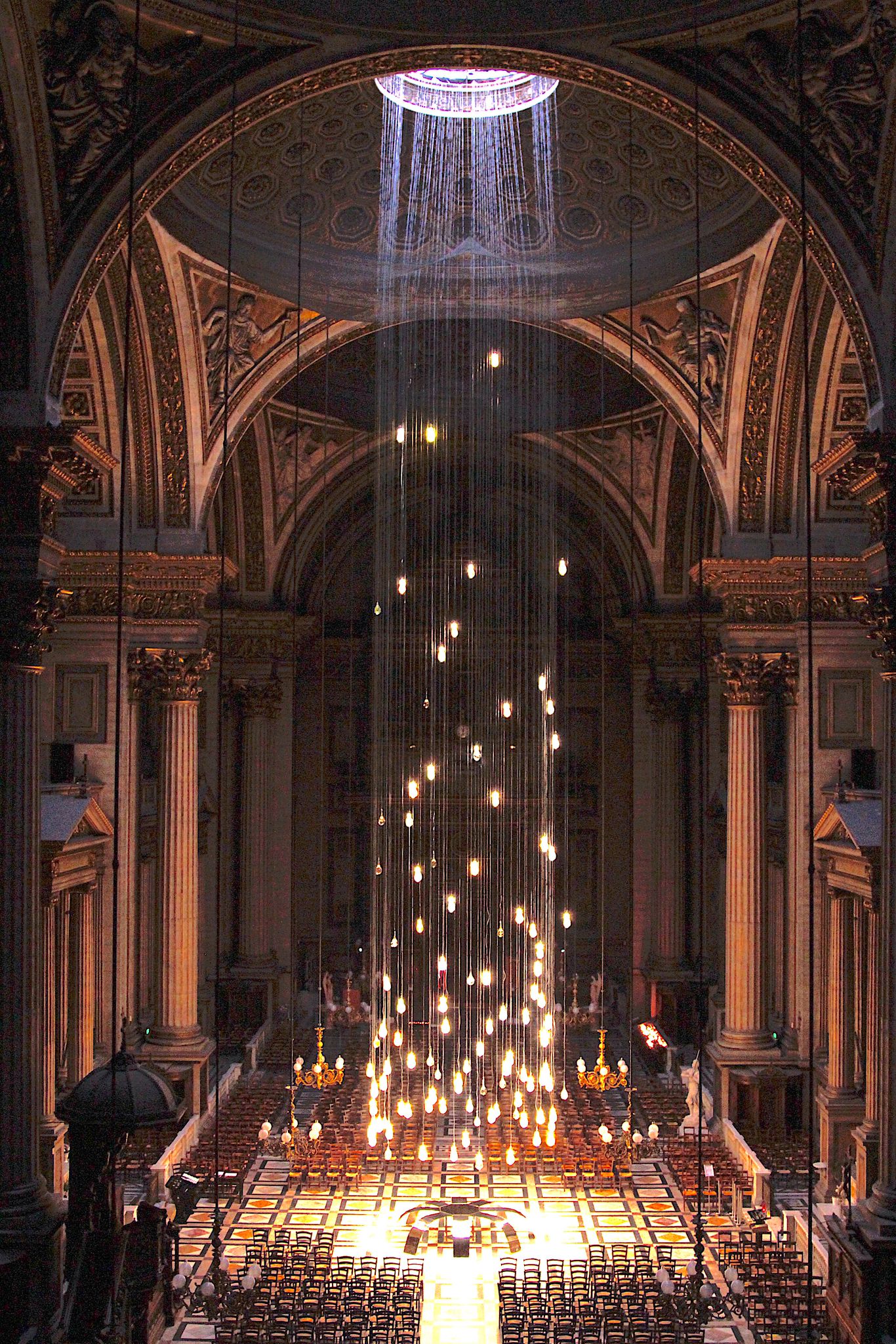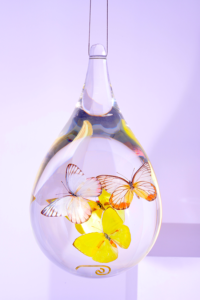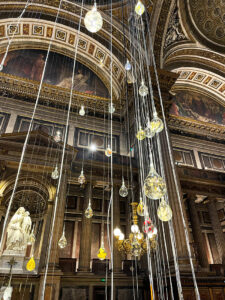Over 100 crystal “tears” hang these weeks from the ceiling of La Madeleine, one of the most iconic churches in Paris. Each of them is a unique handcrafted piece of art that combined with the other fills the church with light. FRH has interviewed Benoît Dutour, the creative mind behind the installation to find out his source of inspiration and the reactions of visitors to the church.

You were given the task of representing Nativity at La Madeleine this year. How did you start working on this concept and how did you arrive at the result we can see this Christmas at the church?
Every year, La Madeleine seeks for contemporary artists to bring a new vision or idea to exhibit. So last year I was given the opportunity to visit the church in detail, from bottom to top, and make suggestions. Nativity is about celebrating the birth of Jesus, of course, the birth of Jesus versus God, but also Jesus versus us, because we are all the source of the mystery of Nativity. So that was the beginning.
To start I asked myself, “what is the best way to symbolise all this?” Then I though that maybe the best way is to symbolise God above the church, coming through the roof of the church. Because La Madeleine is huge, I thought that it would be a good idea to use verticality and volume and put Nativity at the centre of the church, physically. Jesus will go through the oculus of the church and through Tears of Joy. On the floor, you have eight mirrors which are not flat, but convex. When you are in front of one of the eight mirrors, your body looks tiny, like a newborn. I wanted people to experience this to realise that they are also Jesus, they are also the son of God.

Each of the tears hanging at this installation is handcrafted and unique. What is the process to produce them?
Every tear is a sculpture made of optical glass. This product is easy to shape and work with at only 120 degrees, which is a much lower temperature than regular glass. I don’t use a mould. First, I place my products inside the tear, then I pour a special liquid inside and finally, I use a machine the products are compressed to expel the tiny air bubbles. The tear must then be placed in a special oven, where it will cure for seven hours at 120 degrees. After taking it out of the oven you have a big glass stone that you have to polish. This works takes also hour, using sandpaper. The whole process takes roughly three weeks.
When you look at it is like a stream of light flooding into the church… How many tears are displayed right now?
Right now 103 hang from the ceiling. But there might be more if people continue to buy them. I don’t want to produce a high quantity of tears at a low price, I prefer to have a reduced number of high-quality tears made by my hands. Each tear is different. I like to change the objects and materials inside the glass, to explore. Sometimes it works amazingly and sometimes it is a disaster. But this process makes every of the tears unique and special.
We could say that these tears are your artist’s signature.
Yes, definitely. I created this tear concept ten years ago. I have made a few exhibitions with them in Switzerland, Spain, France, etc. Also in Notre-Dame in Paris. I am actually working on an installation for 2024 when Notre-Dame will reopen. This is a donation I would like to make to the Cathedral, which will be absolutely immaculate after years of restoration work. It will be great to have a small, non-invasive memorial in one of the 14 chapels with some of my tears, inside of which we I will put pieces of wood that burnt in 2019. If I can encapsulate this, with a little bit of gold, to make it more precious, it will be a very special object.

The money raised from this installation will go to cover the production costs of the installation, but part of the money will also be donated to La Madeleine, right?
Yes, to give you an idea, the installation alone costs around 18,000 thousand euros, for the materials, the people who assemble it, etc. That is why I offer people the possibility of buying the tears that are part of the installation. My goal is to sell 125 tears. The price is quite high but it help me cover their production and exhibition. Those who buy one will have full ownership of the tear next June. The extra money will be donated to La Madeleine. My goal is not to make a profit. I am very pleased to have had the opportunity of having this installation at La Madeleine. It is my decision to contribute to finance somehow.
How has the public has reacted to the installation so far?
There are people stepping inside the church at the moment of this interview, and what makes me very proud and very pleased is that a few people told me that they are very touched. Some people don’t cry but you can see that they have a feeling a strong emotion. For me, this is very good feedback because this is what I want to share with people: emotion. My goal was to have a different perspective on religion and Jesus.
MORE INFORMATION ABOUT “TEARS OF JOY” HERE





Follow us: